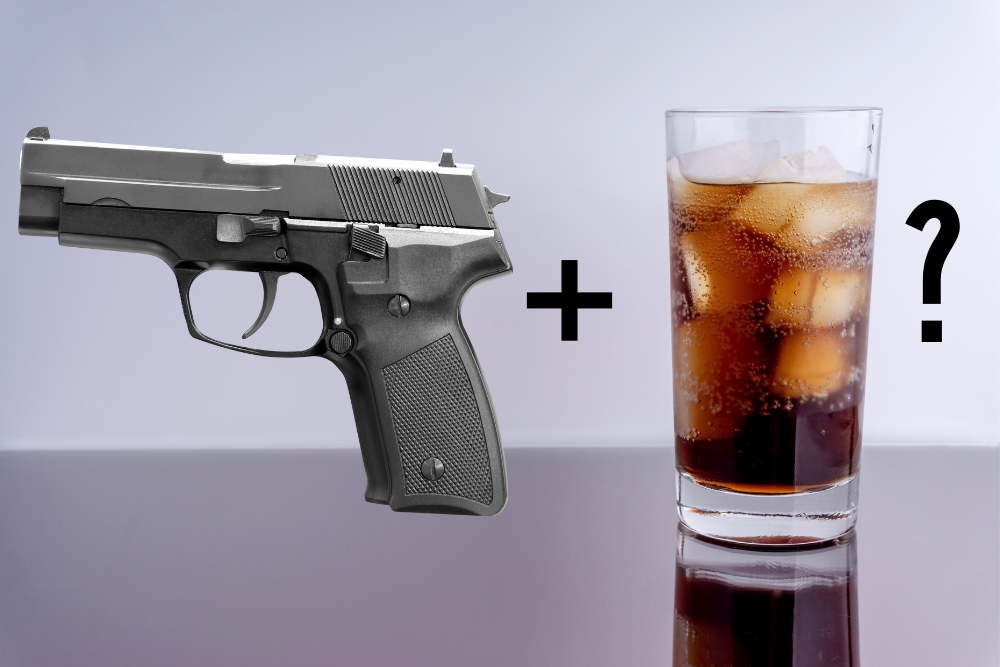A few weeks ago, we witnessed a rare ruling in the trademark world. Some say a precedent was established, but the Trademark Trial and Appeal Board (TTAB) disagrees.
To set the scene: in March 2020, Robert Troy Hoff of Chicago applied to register a trademark for a stylized depiction of the words “Concealed Carry: Registered Handgun”. Mr. Hoff considered the phrase unique enough to merit a distinct mark.
However, if you look it up, you will see the spitting image of a well-known logo — one we associate with laughing polar bears and their penguin friends clinking glass bottles filled with a cold, fizzy drink. Mr. Hoff even used the exact same style of lettering for his mark as Coca-Cola.
No, Coca-Cola Does Not Want to Be Associated with Firearms
Unsurprisingly, the soft drink giant opposed Hoff’s trademark registration on the grounds that it caused “dilution by blurring”.
Hoff’s “Concealed Carry” design, in Spencerian lettering with red and white tones, is a clear knock-off of the Coca-Cola logo. But the TTAB went deeper than visual similarities.
Ultimately, they ruled against Hoff for a few key reasons:
- The Coca-Cola logo is “extremely famous”. At nearly 130 years old, it garners worldwide recognition.
- Hoff intended for his logo to ride on the established goodwill that Coca-Cola holds with the public.
- Association with Hoff’s mark — especially his stance on the deeply controversial subject of handgun laws in America — would harm perception of the Coca-Cola mark.
- This harm or “dilution” would reasonably cause impairment of the Coca-Cola mark’s distinctiveness.
How to Understand the Reasons for the Court’s Decision
There are a few trademark terms to break down here for the layman.
“Dilution” refers to weakening consumer association with a trademark’s particular brand. “Dilution by blurring” happens when different businesses use marks that are too similar. In more trademark language, when dilution by blurring occurs, the distinctiveness of a brand’s mark sustains harm.
Harm is not an over-dramatic term. It really can manifest in consumer action.
Imagine if two fast food restaurants started using golden arches: one, McDonald’s, the original yellow, and the other, McBroughan’s, slightly more orange.
Is it possible you would pull off the highway and accidentally end up at McBroughan’s? How many families would pack all their kids back in the car to find the next exit with a McDonald’s? Most would stay and spend their money wherever they land.
The harm could also happen on more of a cultural wavelength. Perhaps someone sees Hoff’s “Concealed Carry” logo and assumes that it expresses Coca-Cola’s position on handguns. Later, they encounter an event sponsored by Coca-Cola in favor of handgun law restrictions. Now, the potential customer believes that Coca-Cola flips-flops on issues.
Negative judgments of hypocrisy and mistrust might develop. Or perhaps the customer feels strongly one way or another on this issue; the association might stir up extreme approval or disdain based on this misperception.
The consequences of such judgments are manifold and unforeseeable. Especially in such an unstable political climate, harm could mean actual damage to property or people employed by Coca-Cola.
This brings us to another trademark law term: impairment. In general, impairment articulates a reduction in value of a business asset. A logo is an intangible asset with diverse and tangible effects. Thus, impairment of this intangible asset may decrease concrete revenue.
Thinking about developing a trademark for your company that is similar to a famous mark? Think again, and maybe even discuss your idea with an IP attorney who will steer you in a better direction.
